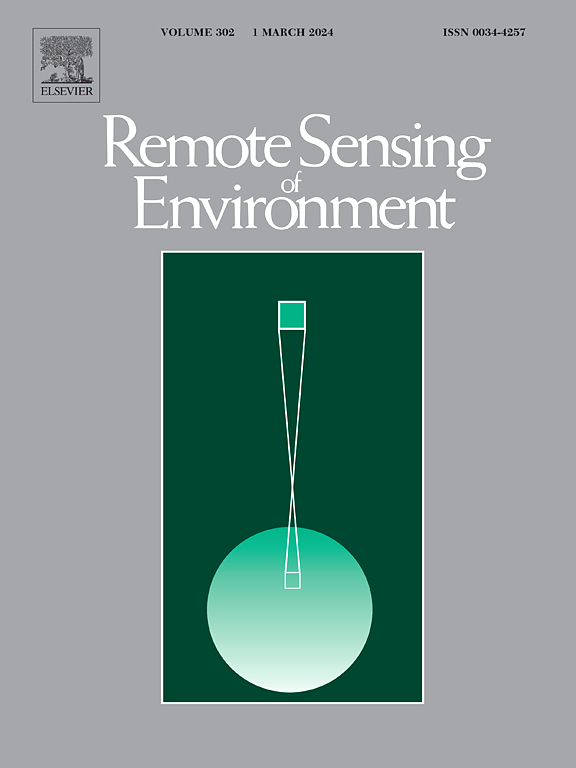Cross-scalar analysis of multisensor land surface phenology
IF 11.1
1区 地球科学
Q1 ENVIRONMENTAL SCIENCES
引用次数: 0
Abstract
Land surface phenology (LSP) metrics derived from remote sensing are widely used to monitor vegetation phenology over large areas and to characterize how the growing seasons of terrestrial ecosystems are responding to climate change. Until recently, however, most LSP studies relied on coarse spatial resolution sensors, which makes assigning direct linkages between LSP metrics and ecological processes and properties challenging due to scale mismatches and because substantial variation in phenology and ecological properties are often present at sub-pixel scale in coarse resolution LSP metrics. In this study, we leverage publicly available LSP data products with three orders of magnitude difference in spatial resolution derived from Moderate Resolution Imaging Spectroradiometer (MODIS, 500 m), Landsat and Sentinel-2 (HLS, 30 m), and PlanetScope (3 m) imagery to examine and characterize the nature, magnitude, and sources of the agreement and disagreement in LSP metrics across spatial scales. Our results provide three key conclusions: (1) LSP metrics from three sensors showed consistently high cross-scalar agreement across sites (r2 = 0.70–0.97), suggesting that they all effectively capture geographic variation in LSP; (2) within-site cross-scalar agreement between LSP metrics was systematically lower relative to agreement across sites, but mean absolute differences were consistent across and within sites (generally <14 days for day of year-based metrics, with a few exceptions); and (3) local-scale composition and heterogeneity in land cover is a key factor that controls cross-scalar agreement in LSP metrics. In particular, we found that site-level heterogeneity in land cover (measured via entropy) and the proportion of evergreen versus deciduous land cover types explain up to half of site-to-site variance in local-scale cross-scalar agreement in LSP metrics. Results from this study support the internal consistency and quality of the three LSP data products examined, and more generally, provide guidance regarding the choice of spatial resolution for different applications and land cover conditions, and yield new insights related to how LSP observations scale across different sensors and spatial resolutions.
求助全文
约1分钟内获得全文
求助全文
来源期刊

Remote Sensing of Environment
环境科学-成像科学与照相技术
CiteScore
25.10
自引率
8.90%
发文量
455
审稿时长
53 days
期刊介绍:
Remote Sensing of Environment (RSE) serves the Earth observation community by disseminating results on the theory, science, applications, and technology that contribute to advancing the field of remote sensing. With a thoroughly interdisciplinary approach, RSE encompasses terrestrial, oceanic, and atmospheric sensing.
The journal emphasizes biophysical and quantitative approaches to remote sensing at local to global scales, covering a diverse range of applications and techniques.
RSE serves as a vital platform for the exchange of knowledge and advancements in the dynamic field of remote sensing.
 求助内容:
求助内容: 应助结果提醒方式:
应助结果提醒方式:


